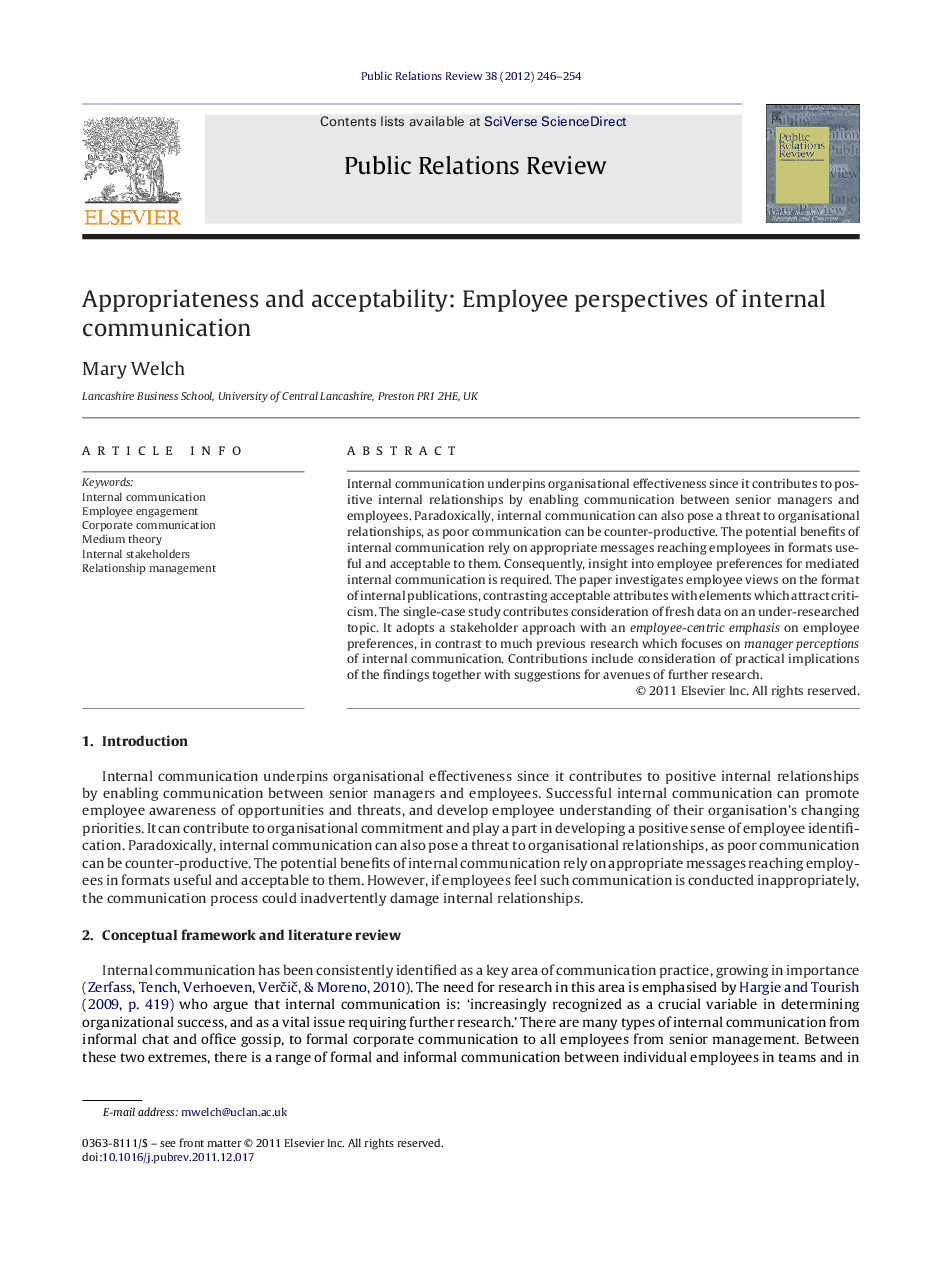| Article ID | Journal | Published Year | Pages | File Type |
|---|---|---|---|---|
| 139341 | Public Relations Review | 2012 | 9 Pages |
Internal communication underpins organisational effectiveness since it contributes to positive internal relationships by enabling communication between senior managers and employees. Paradoxically, internal communication can also pose a threat to organisational relationships, as poor communication can be counter-productive. The potential benefits of internal communication rely on appropriate messages reaching employees in formats useful and acceptable to them. Consequently, insight into employee preferences for mediated internal communication is required. The paper investigates employee views on the format of internal publications, contrasting acceptable attributes with elements which attract criticism. The single-case study contributes consideration of fresh data on an under-researched topic. It adopts a stakeholder approach with an employee-centric emphasis on employee preferences, in contrast to much previous research which focuses on manager perceptions of internal communication. Contributions include consideration of practical implications of the findings together with suggestions for avenues of further research.
► Considers communication and employee engagement. ► Employs an internal communication matrix. ► Focuses on internal corporate communication. ► Analyses data gathered via a qualitative survey. ► Communicators need to consider media affects as well as communication effects.
